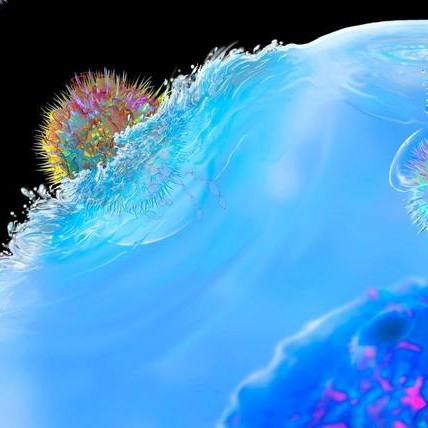-
Biotherapeutics
Beating the odds for a transplant
When the phone rang in the middle of a Sunday night news program, and the caller ID flashed Mayo Clinic, Dennis Pinkerton and his wife, Rhonda, knew it was a pivotal moment.
The doctor on the line delivered news he thought he'd never hear. A pair of donor lungs — kept alive and breathing on a high-tech machine — were a perfect match.
"It felt like a miracle. I live only about 10 minutes from Mayo Clinic in Florida, so we rushed right down," says Dennis. "They showed us a picture of the lungs, and they looked beautiful. I was told the lungs had a common, treatable virus so I was willing to take a chance on them."
An understated miracle
To say Dennis' double-lung transplant was a miracle might be an understatement. The donor lungs had been designated for someone else in a different part of the country. But at the last minute, that patient couldn't accept the organs.
Not wanting to waste a gift of life, the transplant team flew the donor lungs to Mayo Clinic in Florida where they were placed on the ex vivo lung perfusion system. Ex vivo means out of body, and perfusion means circulation of fluid. This technology pumped fluids through the lungs for 3.5 hours, keeping them viable for an extraordinary 15 hours until Dennis' transplant. Usually, six hours is the limit for preserving lungs outside the body and away from blood supply. After that, they are susceptible to cellular damage.
"In any transplant, time is of the essence. Because of logistical issues, these donor lungs would have been discarded had we not been able to preserve them on the lung perfusion pump," says Ian Makey, M.D., a thoracic surgeon who led Dennis' transplant team. "While on the machine, we could see the lungs were functioning well, so we felt confident they were suitable for transplantation after 15 hours."
Mayo Clinic hopes to reduce the transplant waiting list.
"The lung perfusion system is helping us use more donor organs, which in this case was by providing a bridge of time to transplant," says Dr. Makey. "We would not have been willing to transplant lungs that had been on ice, the standard preservation method, for 15 hours."
Only 23% of donor lungs offered for transplantation are suitable for use. In a prospective study, 60% of lungs initially declined for transplant were successfully perfused at a dedicated lung evaluation facility. The research found the survival rate after one year among those transplanted with the perfused lungs matched those with standard lung transplants.
"Machine perfusion allows a detailed assessment of organs prior to transplantation," says Jorge Mallea, M.D., a Mayo Clinic pulmonologist and first author on the study. "Our work now is focused on the development of therapeutic interventions that could promote repair and regeneration of lungs while in the ex vivo system.”
Regenerative medicine and regenerative biotherapeutics seek to replace or restore diseased cells, tissues or organs. Mayo Clinic's Center for Regenerative Biotherapeutics supports the lung perfusion technology as part of its objective of delivering new therapeutic options to patients with rare and complex disorders.
Road to transplant
Dennis, a retired business owner and inventor of several precision pumps that are used in medical diagnostic machines, had been diagnosed with emphysema in 1996. His lungs slowly declined over the years. Lung volume reduction surgery to remove diseased tissue helped restore some function, but it was only a temporary solution. His physicians said he would need a transplant to regain the ability to breathe with physical activities.
A double-lung transplant is one of the most rare and risky of all transplants. Dennis had been on the waiting list for more than a year and faced long odds. At 76, he was six years beyond the typical age limit for a transplant.
"I had resigned to living out the rest of my life in a rocking chair. It was a very sedentary life," he says. "I have four grandkids and a teenage son whom I wanted to be able to play with but couldn't," says Dennis.
In another instance of beathing the odds, the transplant team at Mayo Clinic in Florida decided the size of the donor lungs would not match anyone else except Dennis.
"These patients have cavernous chest spaces because of the overinflation that occurs with emphysema. Because the donor lungs were very large, we determined that Mr. Pinkerton was the only one on our list who could accept these lungs," says Dr. Makey.
Dennis had the double-lung transplant in August 2022 and was discharged from Mayo Clinic in Jacksonville 15 days later.
"I feel wonderful. I’m able to experience life in a new way, thanks to the donor and the Mayo Transplant Team" he says. "I'm working on rebuilding my strength and playing with my grandchildren and son. I couldn't be happier.
Mayo Clinic continues to refine lung transplantation and lead on ex vivo lung perfusion technology through research and practice.
###










